The 10 best birding spots in Uganda for enthusiastic and special interest birders. You can find are 1082 birds`species in Uganda. For the most adorable and easy to see, the grey-crowned crane is on the national flag and coat of arms. But, the hardest to find are African green broadbill, short-tailed warbler, green-breasted pita, shoebill stork and Fox’s weaver. Those intending go in search of the above species, here are 10 best hardcore birding spots in Uganda.
Bwindi Impenetrable Forest National Park
First off, is Bwindi forest in south-western Uganda. For most visitors, gorilla trekking is the main reason to visit Bwindi forest. But the park, with 357 bird species recorded of which 10 are globally threatened and 23 Albertine Rift Endemics (AREs). It is one of the best birding spots according to Africa Bird Club. There are 4 sectors of the park and best recommended Bwindi birding spots are Buhoma and Ruhija. Mubwindi Swamp and Rwamunyonyi peak in Ruhija are home to the African Green Broad-bill, Strange weaver, Dusky Crimsonwing, and Rwenzori turaco. In addition, the Ivi River trail in Buhoma, the park headquarters provides better chance to search for Chapin’s fly catcher, short-tailed warbler, northern-double collared sun bird, Archer’s robin chat, Stripe-breasted tit, and Handsome francolin. Besides the AREs, there are several Afro tropical highland birds such as Narina tragon, western green and yellow ramped tinker birds.
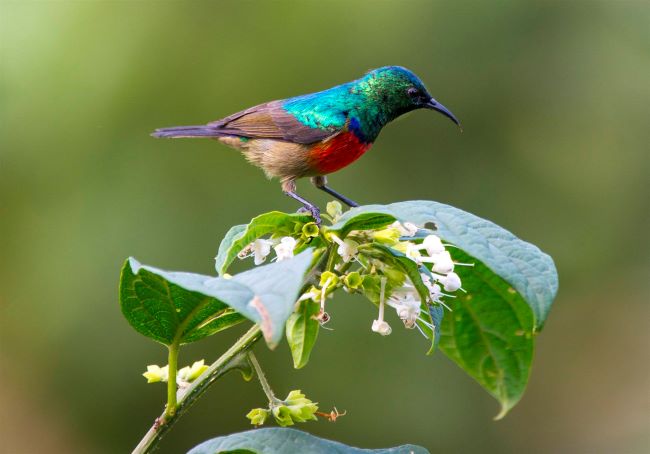
Semuliki National Park
Semuliki National Park has 450 species of birds which is almost 40% of the total bird count in Uganda. Remarkably, Semuliki forest is an extension of the great Ituri Congo River Basin Forest in western Uganda. Therefore, it offers many central African birds such as Congo Serpent eagle, Piping horn bill, Nkulengu rail, Orange weaver and black-wattled horn bill. Further, Semuliki is home to 44 Congo-Guinea species, which are rare to find in other parts of East Africa. Besides, the park also offers Sempeya male and female hot springs. Beautiful nature walks along the Semliki river, the headwaters of the Albert Nile.
Murchison Falls National Park
Also among gthe best birding spots in Uganda: The protected area at the end of the Albertine rift valley has 460 species of birds recorded. Birding in Murchison falls is done by Nile River boat cruise, game drive and nature walks. In particular, the park provides home to the Shoe bill Stork. Also, there are 11 of the 44 Congo-Guinea Biome species, 4 of 12 Lake Victoria Basin Endemics and 3 of the 32 Somali-Masai Biome species.
Besides birding, the park has excellent opportunity to encounter elephants, buffaloes, hippos, Rothschild’s giraffe, lions and leopards. Several antelope species such as Jackson’s hartebeest, oribi, waterbucks are found in the park.
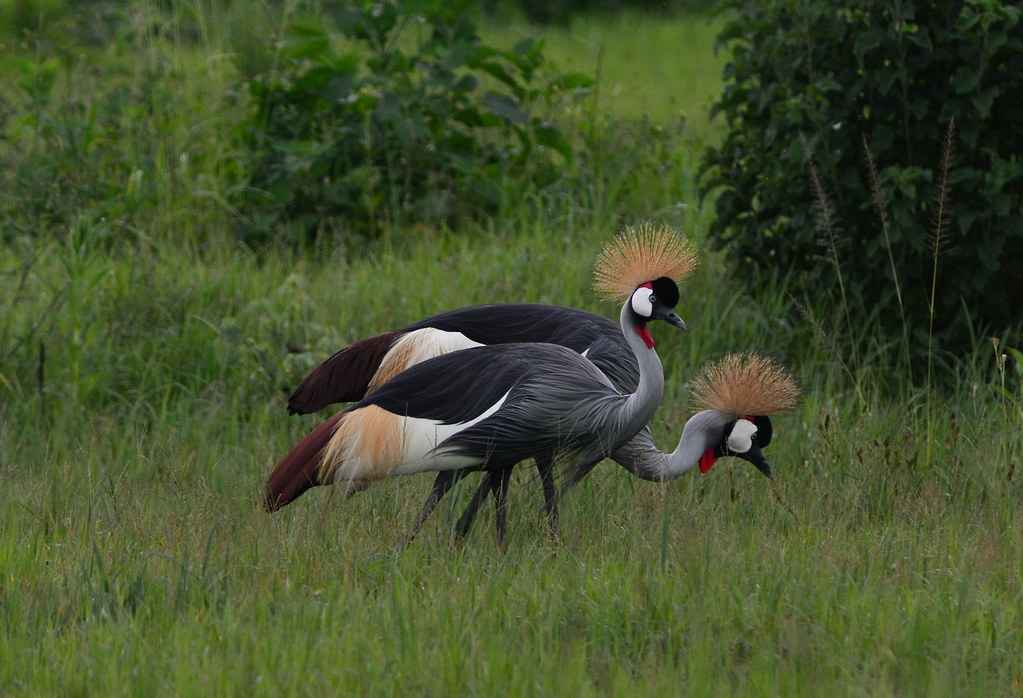
Kidepo Valley and Pian Upe Wildlife Reserve
For Uganda bird watching tours in search of Somali-Masai Biome species of birds such as Karamoja Apalis. Visit Kidepo Valley National Park or Pan Upe Wildlife Reserve. These areas have to be included in the best birding spots in Uganda. Because they have the most number of raptors in the country. Both of these protected areas found in semi-desert Karamoja region, north-east Uganda. They form part of the Somali-Masai savanna grassland.
Somali-Masai species of birds are mostly found in Pian Upe Wildlife Reserve. These are Somali-Breasted bunting, Bristle-crowned starling, three-streaked tchagra, Hemprich’s hornbill, pink-breasted lark, Acacia tit, Hunter’s sunbird, yellow-billed shrike, yellow-vented eromomela, buff-breasted bustard.
Bird Watching on Mount Moroto
Mount Moroto 3,038m is the highest volcanic mountain in the Karamoja plains. It is situated right in the center of the Karamojong land with Mount Elgon to the south and Kidepo valley national park to the north. Moroto is a combination of birding, hiking, mountain biking, adventure, and nomadic culture. The chief town at the base of the mountain is a good stopover for travel planning. You can stay at Kara-Tunga Karamoja tented safari camp. And then arrange trips with local tour guides to the best birding spots around the nomadic villages of the Tepeth people.
Sighted birds- among others – are White-crested Helmet-shrike, the infamous Boran Cisticola, Peregrine Falcon and Mocking Cliff-chat.
For more information go to the Kara-Tunga Art and Tours Website
Mabamba bay wetland, Entebbe
Just a day trip from Entebbe town or Kampala capital city. Mabamba bay wetland is famous for harboring the highest number of shoebills. It is also the best of the birding spots in Uganda to search for the papyrus gonoleck and the seasonal migrant raptor – the Osprey. The bird of prey arrives around April to August, which indicates that wetlands around Lake Victoria are essential habitats for bird-life.
To go in a wooden canoe through the swamp channels makes no noise offering the greatest advantage to see birds. Nkima Forest Lodge is now open to stay nearer the site. An alternative birding site, besides is the Makanaga wetland
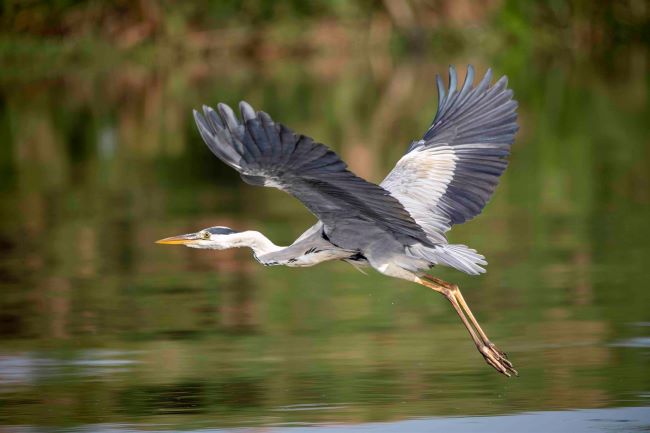
Mabira Central Forest Reserve
Situated 35 miles east of Kampala capital city between the urban centers of Lugazi and Jinja. The tropical forest is threatened by sugar cane plantations and many acres are lost per year. You need to visit Mabira forest before it’s endangered species disappears. There are over 300 species of birds including several species of the Guinea-Congo Forests and Sudan-Guinea biome. The Black-shouldered night-jar, Nahan’s francolin, Grey longbill are some of them.
Mabira is more than just a birding spot, it offers memorable and fun adventure activities such as cycling and zip line above the roar of Griffin waterfalls. For travelers with 2-3 days to spend exploring can stay at Mabira rainforest lodge or camp out in the jungle and track the mangabay monkeys.
Lake Mburo national park
Lake Mburo’s Kyempitsi trail is also the best birding sport to search for the African fin-foot, shoebill stork, Narina tragon, and papyrus gonolek. Keep in mind that the species are accessible through guided nature walks along the lake shores to the open grasslands in the north of Rwonyo visitor center. Visitors may see some of the 35 raptors such as African marsh harrier, African harrier hawk, martial eagles, and grey kestrel. Continue to Miritti trail in the valley to explore for nocturnal species, such as African scops and Verreaux’s eagle owls.
Kihingami wetlands, Kibale forest
Kihingami wetlands are located in the Sebitoli northern part of Kibale Forest National Park. Both sites provides excellent birding opportunities for black bee-eaters, white spotted fulfftail, and standard winged night jar. Specifically, birding is aimed at the green breasted pitta.
Forest elephants occasionally visit the swamp coming from the Toro Semliki wildlife, a good sport to look for shoebills on Lake Albert and chimps in the grasslands. Elephant tracks are often identified on the trail from the swamp through to the center of the forest at Kanyanchu, the headquarters of Kibale. The park is famous for harboring chimpanzees and 12 monkey species such as red colobus monkey, blue monkeys, grey cheeked mangabeys, black and white colobus monkeys. Chimpanzee tracking begins at Kanyanchu in the morning or afternoon.
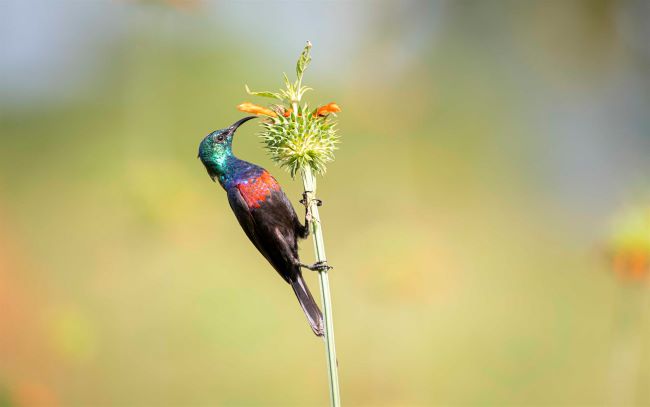
Rwenzori mountains national park
Of the 10 birding spots in Uganda, we love Rwenzori the most for it is the highest mountain with equatorial glaciers. The wildlife species and adventure to be found there is it’s strongest attribute. Hiking from one vegetation zone to the next up to the top of Margherita Peak on Mount Stanley reveals and exposes the glory of nature. Every step you take in the Rwenzoris counts up to what you might see on the trails. There 217 species of birds of which 18 are Albertine rift endemics, 60 to 80 Afro-tropical highland, and 17 species of the Guinea-Congo Forest Biome. The graceful 5 birds to search for include Stuhlmann’s Double-collared Olive-back, Bamboo Warbler, Golden-winged Sunbird, Scarlet-tufted Malachite Sunbird, and Rwenzori Turaco.
Contact us to connect you to the best birding field guides. Of course, at free consent.
In preparation for your bird watches, the guide or tour operator will put in some extra birding spots, walks and a place to stay. Of course, we celebrate the work done by tour guides that take good care of you.
In 2013, a small group of women started a club expanding bird watching profession largely dominated by men. It has molded individuals into a great team of tour leaders and eventually agents of change — educating people about the conservation of birds. In particular, the grey crowned crane, the national bird of Uganda is an endangered specie. It is also a symbol of wealth and long life among some people. Their attachment to the bird alone is enough to conserve it. Check out the 1st International Conference for Women Birders in Uganda in December 2023


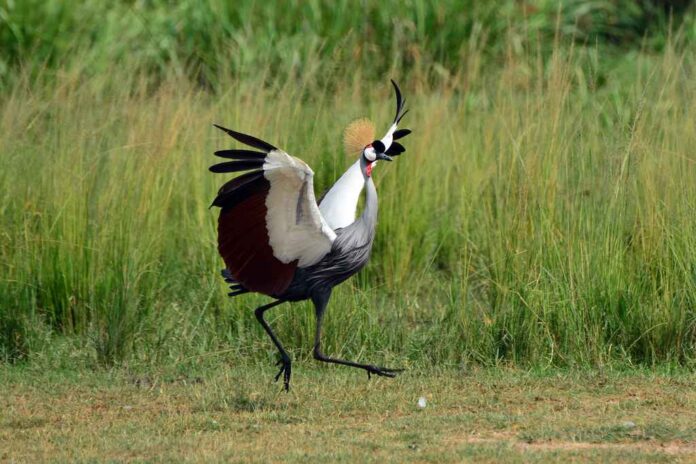
 Uganda Safari Travel Guide Advert
Uganda Safari Travel Guide Advert


